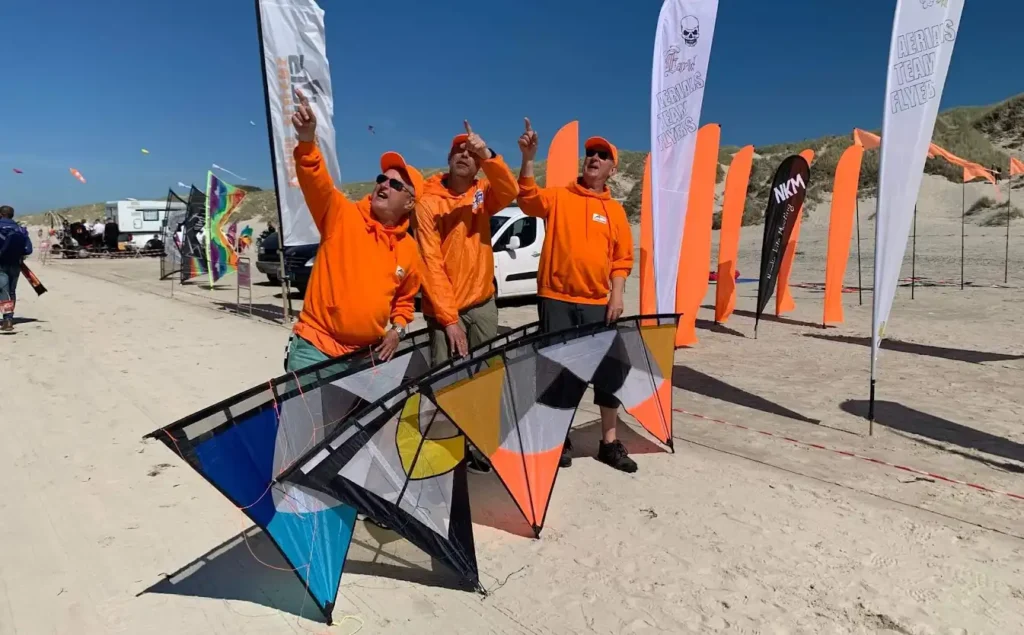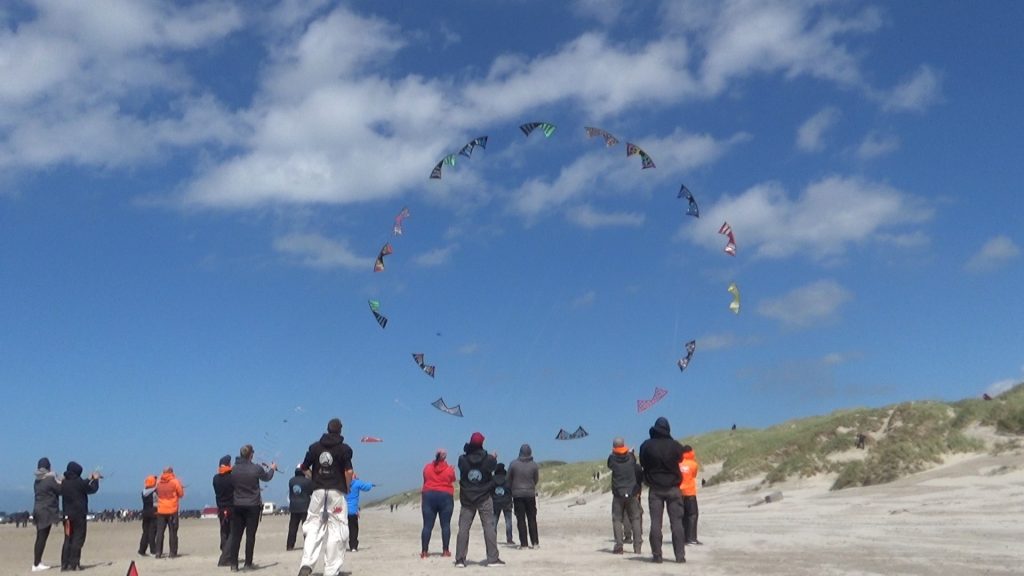Kite team flying is a relatively new and exciting form of aerial performance that has seen significant development in recent years. The sport involves a team of individuals flying kites in coordinated patterns and manoeuvres, often set to music or other forms of synchronized performance.
The origins of kite team flying can be traced back to the traditional kite-flying festivals of Asia, where large numbers of kites would be flown in the sky in a coordinated fashion, often with intricate designs and patterns. However, it wasn’t until the 1980s that kite team flying began to evolve into the modern form of the sport we know today.
One of the key figures in the development of kite team flying is David Gomberg, an American kite enthusiast who began experimenting with coordinated kite flying in the 1980s. Gomberg developed a system of communication and signalling that allowed multiple kites to be flown in a coordinated fashion, paving the way for the formation of kite team flying groups.

The early days of kite team flying were primarily focused on the coordination of a small number of kites, typically between four and eight. These early teams would perform basic manoeuvres and patterns, such as flying in formation or performing simple choreographed routines.
However, as the sport evolved, teams began to expand in size and complexity. Today, kite team flying teams can number in the dozens or even hundreds, with each member flying a different kite or set of kites. These larger teams are able to perform increasingly complex manoeuvres and routines, often set to music or other forms of synchronized performance.
One of the most impressive aspects of kite team flying is the level of coordination and communication required to pull off complex manoeuvres and routines. Teams use a combination of hand signals, radios, and other forms of communication to coordinate their movements and ensure that the kites are flying in the correct formation or pattern.

Kite team flying is a sport that has become increasingly popular in recent years, with teams popping up all around the world. Today, you can find kite team flying teams in countries as diverse as the United States, Japan, Italy, Germany, and many others.
One of the major events in kite team flying is the “Berck sur Mer” International Kite Festival, held annually in France. This festival attracts kite flyers from all over the world and features some of the most spectacular kite team flying displays you will ever see.
The future of kite team flying looks bright, as the sport continues to evolve and attract more enthusiasts. With new technologies and materials being developed all the time, it is likely that we will see even more impressive feats of aerial coordination and performance in the years to come.
In conclusion, Kite team flying is an exhilarating and dynamic sport that has seen significant development over the past few decades. It is a sport that requires a high level of coordination, communication, and skill, and it continues to evolve and attract more enthusiasts every day. It’s a fascinating glimpse into the world of kite flying and a reminder of the beauty of the sky. The future of kite team flying looks bright, and it is a pleasure to watch this aerial performance that is growing in popularity all over the world.




